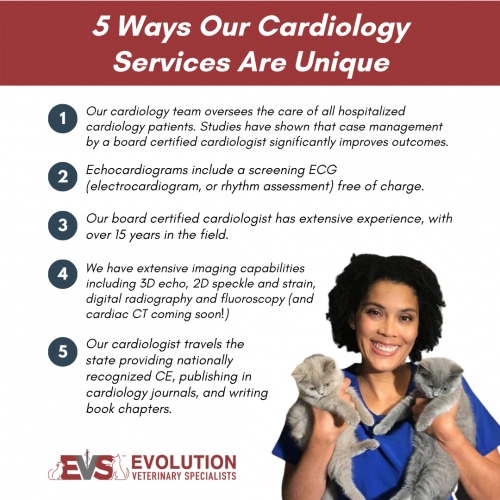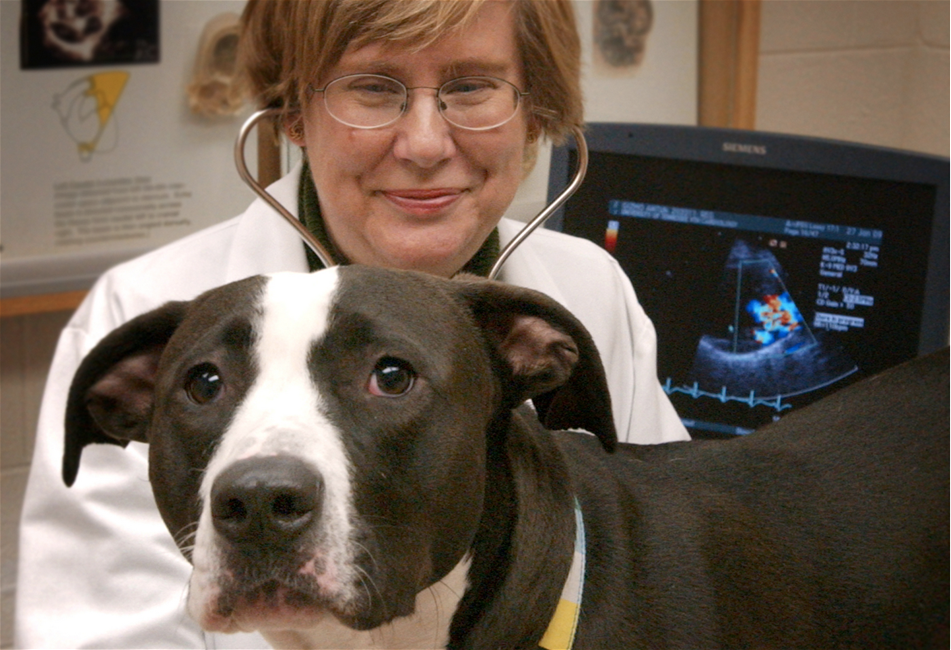How Accurate Are CT Scans For Dogs in Detecting Health Issues?}
The Role of Ultrasound and CT Scan in Modern Veterinary Practices: Insights From Experienced Professionals
In modern veterinary practices, ultrasound and CT scans considerably boost diagnostic abilities. These imaging methods offer essential understandings right into animal wellness, directing therapy decisions. Experienced professionals acknowledge the one-of-a-kind advantages of each method. Ultrasound provides real-time evaluations, while CT checks provide elaborate anatomical details. Recognizing their applications and duties increases vital questions regarding their effect on individual end results and the future of veterinary diagnostics. What insights can be acquired from their combined usage?
Comprehending Ultrasound in Veterinary Medicine
Ultrasound is a necessary analysis tool in vet medicine, providing a non-invasive method to visualize internal frameworks. This imaging method utilizes high-frequency acoustic waves to develop real-time photos of tissues and organs, permitting vets to assess problems without medical intervention. Usual applications consist of reviewing the heart, liver, kidneys, and reproductive body organs, along with keeping track of pregnancies.The treatment is relatively quick and can be done in different setups, making it an easily accessible alternative for veterinarians. Unlike radiography, ultrasound supplies detailed info about soft tissues and blood circulation, which is essential for precise diagnoses.Veterinary professionals count on ultrasound to find problems such as tumors, cysts, and fluid accumulation. Its ability to lead biopsies and various other procedures further improves its energy in professional practice. By supplying a secure and reliable method to take a look at internal composition, ultrasound has ended up being a foundation of modern-day veterinary diagnostics.
The Benefits of CT Scans for Animal Diagnostics
CT checks deal significant benefits in veterinary diagnostics by providing improved precision in identifying internal conditions (CT Scans For Dogs). As a non-invasive imaging strategy, they guarantee the safety and comfort of pets throughout examinations. Additionally, CT scans help with an extensive assessment of inner structures, permitting for a lot more reliable therapy planning
Boosted Analysis Precision
Advancements in imaging innovation have significantly boosted analysis precision in veterinary medication, specifically through making use of CT scans. These scans supply in-depth cross-sectional pictures of a pet's inner frameworks, enabling vets to identify problems with accuracy. The high resolution and three-dimensional capacities of CT imaging help with the discovery of conditions such as tumors, cracks, and interior bleeding that may be missed with typical imaging approaches. Additionally, CT scans can aid in pre-surgical planning by using a complete sight of anatomical relationships. This degree of detail not only boosts the precision of diagnoses but also aids in customizing effective therapy strategies. Consequently, the combination of CT innovation into veterinary techniques is transforming the landscape of animal healthcare, improving outcomes for patients.
Non-Invasive Imaging Strategy
The introduction of non-invasive imaging methods has actually revolutionized pet diagnostics, with CT scans becoming a popular device in veterinary methods. These scans give high-resolution, cross-sectional photos of a pet's inner structures, allowing vets to evaluate complicated problems without the demand for intrusive treatments. The benefits of CT scans include their ability to find growths, cracks, and interior blood loss with amazing precision. In addition, they facilitate the analysis of soft cells and organs, enhancing analysis capabilities. The speed of CT scanning allows quick decision-making, which is vital in emergency circumstances. By decreasing anxiety and pain for the pet, CT scans add to a much more humane approach to diagnostics, eventually boosting treatment end results and advancing veterinary care.
Comprehensive Internal Evaluation
A complete internal assessment is crucial for accurate diagnosis and reliable therapy in veterinary medication. CT checks offer substantial benefits in this respect, giving comprehensive cross-sectional pictures of a pet's interior frameworks. This sophisticated imaging modality enhances visualization of complicated physiological regions, enabling vets to determine abnormalities such as growths, cracks, and inner blood loss with better accuracy. Additionally, CT checks facilitate the evaluation of problems that might be testing to detect through traditional techniques. The speed and accuracy of CT imaging likewise add to prompt treatments, improving client results. As vet methods progressively integrate CT technology, the benefits of considerable inner evaluations become apparent, enhancing the relevance of this tool in contemporary vet diagnostics.
Contrasting Ultrasound and CT Imaging Techniques
While both ultrasound and CT imaging offer essential roles in veterinary diagnostics, each method provides unique benefits and restrictions that can influence medical decision-making. Ultrasound is especially valued for its real-time imaging capabilities, allowing veterinarians to observe dynamic physical procedures. This method is non-invasive, mobile, and does not include ionizing radiation, making it a more secure alternative for both medical professionals and pets. Ultrasound might have restrictions in envisioning specific anatomical frameworks or deep tissues.Conversely, CT imaging provides comprehensive cross-sectional sights of the body, permitting for exact localization of abnormalities. It masters examining complex body organs and frameworks, particularly in the thorax and abdominal area. CT scans require sedation or anesthesia in lots of instances and include exposure to ionizing radiation. Eventually, the selection between ultrasound and CT depends upon the particular professional situation, the location of passion, and the urgency of the analysis demands.
Case Studies: Effective Diagnoses Through Imaging
Study show the considerable enhancements in analysis accuracy achieved via innovative imaging technologies like ultrasound and CT scans in veterinary methods. These innovations not only enhance the detection of different problems yet likewise assist in reliable and prompt treatment strategies. Assessing details situations can highlight the transformative effect of these imaging techniques on veterinary medication.
Analysis Precision Improvements

Imaging Technology Advancements
As veterinary imaging modern technology remains to advance, its effect on diagnostic abilities ends up being increasingly apparent. Recent situation studies highlight the successful application of innovative ultrasound and CT check strategies in determining intricate problems. For example, a vet facility made use of high-resolution CT scans to detect an unusual form of lung cancer in a dog, which standard imaging had actually missed. In a similar way, an ultrasound assessment exposed an abdominal mass in a feline, prompting timely surgical treatment and a positive outcome. These developments not only improve diagnostic precision however additionally enable veterinarians to develop targeted treatment strategies. By leveraging sophisticated imaging technologies, veterinary specialists are significantly enhancing individual care, resulting in much more efficient monitoring of different health problems in animals.
The Function of Imaging in Emergency Situation Veterinary Care
Imaging plays an important function in emergency situation veterinary care, providing vets with important info required to make quick, informed decisions. In urgent circumstances, techniques like ultrasound and CT scans make it possible for specialists to promptly examine a pet's interior frameworks, identifying critical problems such as inner bleeding, cracks, or body organ abnormalities. These imaging modalities enable for real-time assessments, helping with timely interventions that can be life-saving. Ultrasound is invaluable for assessing soft cells injuries and conditions like fluid build-up, while CT scans deal in-depth images of complicated physiological frameworks, crucial for diagnosing trauma situations. The speed and precision of these imaging strategies improve the vet's ability to design efficient therapy strategies, ensuring the very best possible end results for their people. Subsequently, the combination of advanced imaging modern technologies right into emergency vet techniques is not just valuable however increasingly necessary, as it enhances diagnostic abilities and boosts total animal treatment throughout vital moments.
Training and Proficiency in Vet Imaging
Sophisticated imaging techniques such as ultrasound and CT scans Extra resources are crucial for effective vet care, the successful implementation of these innovations greatly depends on the training and knowledge of vet experts. Skilled use imaging devices requires thorough expertise of makeup, pathology, and the concepts underlying each method. Vet specialists need to undertake customized training to properly translate imaging outcomes, which is vital for identifying conditions and intending treatment.Certifications and continuing education and learning in veterinary imaging improve the skills of professionals, enabling them to remain upgraded with technical advancements. Cooperation between radiologists and veterinarians typically leads to enhanced analysis precision, as specialists can provide insights right into complex situations. On top of that, useful experience in managing imaging tools promotes self-confidence in its application. Eventually, the high quality of vet imaging services is straight associated to the level of training and expertise possessed by the specialists utilizing these necessary analysis tools.
Future Fads in Diagnostic Imaging for Animals
With the fast innovations in technology, veterinary analysis imaging is poised for significant evolution in the coming years. Arising trends indicate a shift in the direction of even more accessible and mobile imaging modalities, such as handheld ultrasound devices, which could improve field diagnostics. Additionally, the combination of synthetic knowledge is expected to reinvent image evaluation, enabling quicker and more exact analyses of results.Moreover, developments in 3D imaging strategies and calculated tomography will provide vets with more extensive views of animal makeup, bring about better treatment plans. Digital fact innovation may also play a function in medical planning and education, offering veterinarians an unique perspective on intricate cases.As telemedicine remains to grow, remote examinations facilitated by analysis imaging will certainly come to be extra common, allowing professionals to aid family doctors in real-time. In general, these fads are readied to boost the efficiency and effectiveness of vet treatment, eventually enhancing pet end results.
Frequently Asked Inquiries
Just How Much Do Ultrasound and CT Checks Expense in Veterinary Clinics?
The expenses of ultrasound and CT scans in vet centers normally range from $300 to $1,500, depending on variables such as location, center type, and specific procedures required for the pet's diagnosis and treatment.

Are There Any Threats Connected With Ultrasound and CT Scans for Pets?
Ultrasound and CT scans generally pose very little risks to family pets. However, possible concerns include sedation reactions and direct exposure to anesthetics. Cancer Veterinary Near Me. Vets meticulously analyze each case to mitigate any dangers connected with these diagnostic procedures
The Length Of Time Do Ultrasound and CT Procedures Generally Take?
Ultrasound procedures generally take about thirty minutes to an hour, relying on the intricacy. CT scans, being more thorough, usually call for thirty minutes to 90 minutes, including prep work and recovery time for the family pet.
Can All Veterinarians Perform Ultrasounds and CT Scans?
Not all veterinarians can execute ultrasounds and CT scans. Specialized training and certification are typically required to assure competency in these sophisticated imaging methods, which might restrict their availability to vets with added qualifications and sources.
What Kinds Of Pets Profit The Majority Of From These Imaging Techniques?
Specific pet types, particularly pets and pet cats, advantage considerably from ultrasound and CT scans. These imaging strategies improve analysis accuracy for conditions like tumors, inner injuries, and organ abnormalities, leading to better therapy end results and person care. The high resolution and three-dimensional abilities of CT imaging help with the detection of problems such as tumors, cracks, and interior bleeding that may be missed with traditional imaging approaches. Case studies show the substantial renovations in diagnostic precision achieved via sophisticated imaging modern technologies like ultrasound and CT scans in vet methods. Improving analysis precision in vet techniques has actually been significantly aided by innovations in imaging innovations such as ultrasound and CT scans. Sophisticated imaging methods check my source such as ultrasound and CT scans are essential for reliable vet care, the effective implementation of these modern technologies heavily depends on the training and proficiency of vet experts. Veterinary professionals need to go through specialized training to properly interpret navigate to these guys imaging results, which is vital for diagnosing problems and intending treatment.Certifications and proceeding education and learning in veterinary imaging improve the skills of specialists, enabling them to remain upgraded with technical advancements.